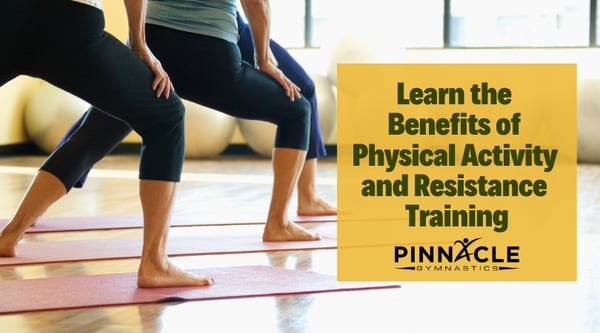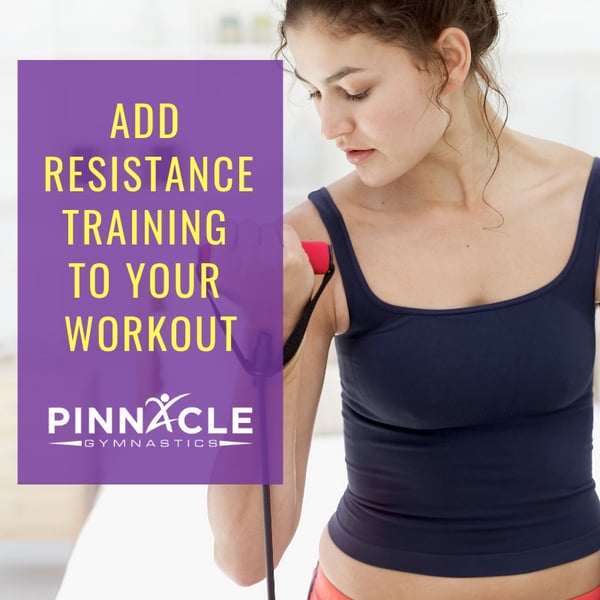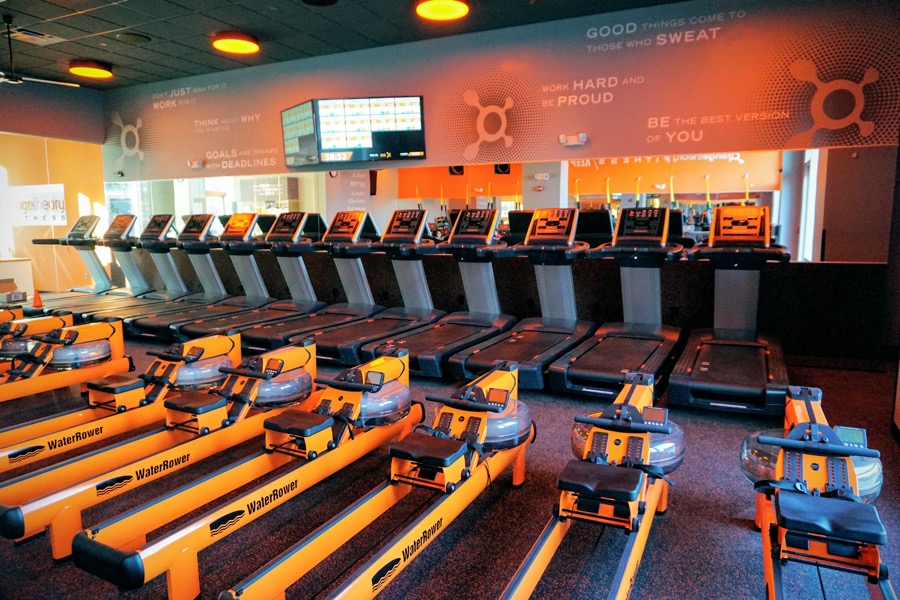Benefits of Physical Activity and Resistance Training in Adults
The general mindset of physical activity and resistance training is that it takes too much time with the busy schedules of our daily lives. Being physically active is much easier than going to the gym for a couple hours a day. Physical activity recommendations are only 150 minutes, or 2.5 hours, a week. That is just over 20 minutes a day! Additional benefits are seen for adults who are above the 150 minute activity marker. Physical activity can be done anywhere whether it is at the gym, at home, outside, or with your children or friends. It is extremely important to keep ourselves healthy and strong. Not only does this improve our overall well-being, it sets a positive example to those around us.

General Benefits of Physical Activity and Exercise Training
- Increased metabolism and caloric burn leading to improved muscle structure
- Decreased risk of congenital heart disease, stroke, type 2 diabetes, and some forms of cancer
- Decreased blood pressure, provides important role for weight management, enhanced insulin sensitivity
- Increase in bone mass density, improved neural control, reduced risk of falling, improved muscle and limb stability
- Enhanced feelings of energy, quality of life, cognitive function, and reduced risk of cognitive decline (Dementia/Alzheimer’s)
Types of Physical Activity and Recommended Duration of Activity
- Light Activity- Light effort level pertaining to normal daily activities such as slow walking, house chores, and light cleaning. More on the importance of warm up and cool down.
- Moderate Activity- Requires a moderate effort level and pertains to most forms of basic exercise such as brisk walking, moderate weight training, going on a light hike, golf, yoga, light cycling and gardening.
- Vigorous Activity- Very wide range of exercise that involves many types of exercises such as step classes, circuit weight training, competitive sports, calisthenics/plyo-metrics, swimming laps
Cardio-Respiratory (Aerobic) Activity
Cardiovascular and respiratory system efficiency and strength. Provides more energy throughout the day, improved heart and lung function, reduced risk of illness, and improved blood flow throughout the body.
- Light-moderate activity 5+ days per week of 30-60 minutes per session (150 minutes per week)
- Or Vigorous activity 3+ days per week 20-60 minutes per week (75 minutes per week)
- A Combination of the two is most beneficial
Resistance Exercise
This creates stronger muscles which creates a more efficient flow for your energy system, stronger balance and body control, and reduces risk of injury with everyday tasks.
- Each major muscle group should be trained 2-3 days per week.
- Muscle groups entail legs, trunk/core, and upper body
- Repetitions may vary based off experience and training desire
- 8-12 Reps improve strength and power
- 10-15 Reps improve general strength
- 15-20 Reps improve muscular endurance

Flexibility Exercise
Flexibility exercises improve muscle and blood flow function, reduce the risk of injury and increase range of motion. They also improve efficiency of muscles during physical tasks.
- Static stretching to a point of discomfort, not pain
- 2-3 days per week
- 10-30 seconds works well for most adults
- Older adults will see greater benefit from 30-60 seconds
- Target goals for stretching progressions should be 60 seconds before moving to a more difficult version of the stretch
Neuro-Motor Exercise
Neuro-Motor Exercise is exercise that increases brain-muscle communication to improve muscle function. It leads to increased balance and reduced risk of falls, reduced risk of injury.
- Exercises that develop motor skills such as balance, agility, coordination, and body control
- 2-3 days per week
- 20-30 minutes per session
In Conclusion
There are many different methods to reach sufficient physical activity levels. Combinations of the above methods are the most efficient within the busy life schedules. It doesn't take hours at the gym to create a healthy lifestyle. Certain types of physical activity such as circuit training or high-intensity interval training are great options for shorter exercise bouts that target all types of exercise.With a busy daily schedule completing a 20-30 minute moderate-high intensity is extremely efficient to see the positive effects of physical activity.


